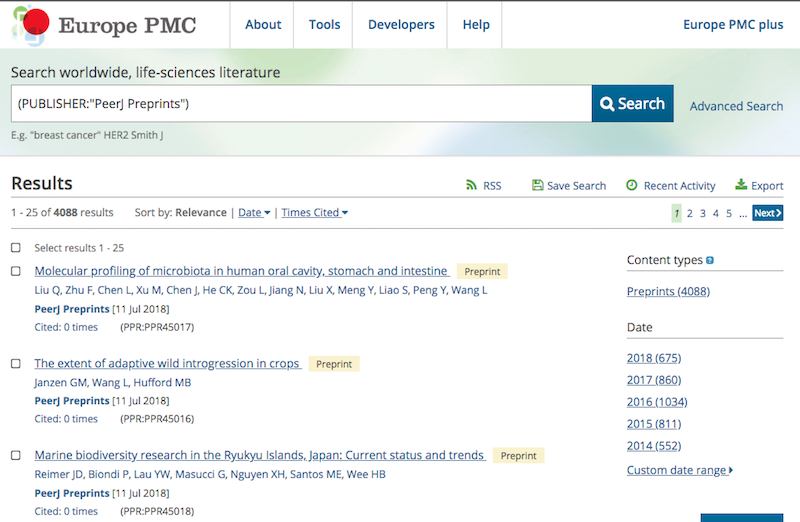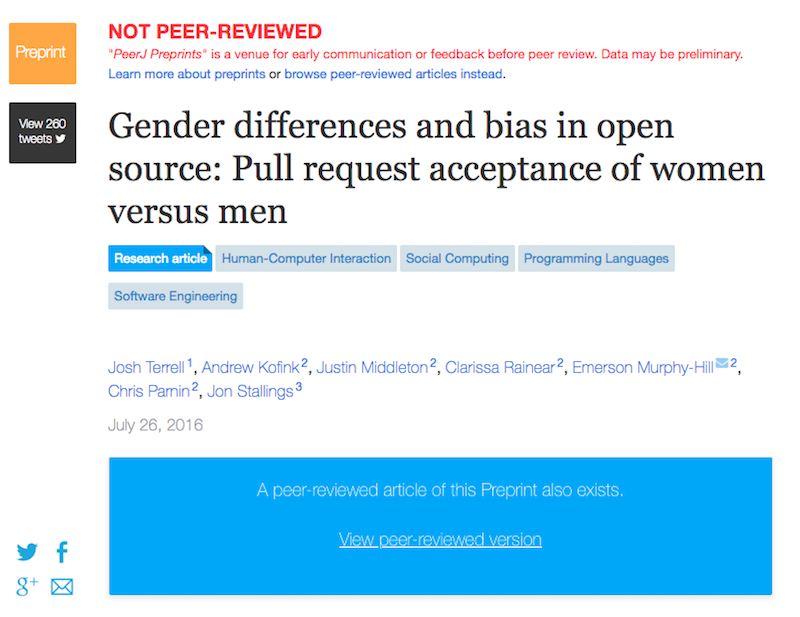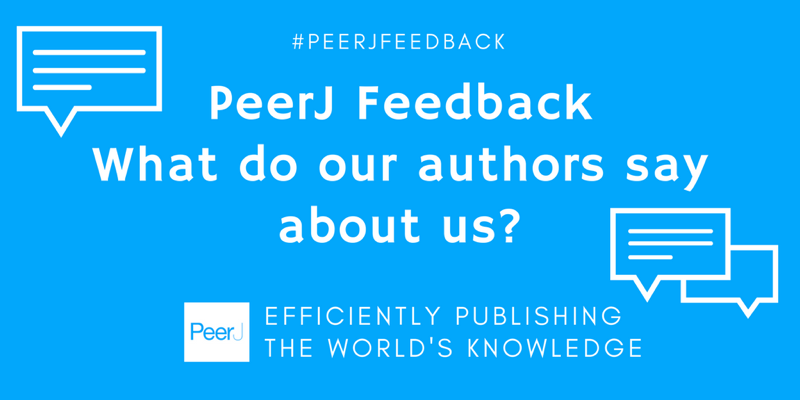PeerJ is thrilled to announce that starting July 2018, all PeerJ Preprints are now indexed in Europe PMC, a major repository for life sciences. We know it is extremely important to our authors that their work is appropriately indexed and maximally discoverable and extending this opportunity to our preprint authors is an exciting step towards the rapid acceleration of scientific work. You can view all the PeerJ Preprints in the Europe PMC database here. You can expect to find preprints in Europe PMC within 24 hours of receiving the DOI.
PeerJ Preprints is a preprint server for biology, medicine, environmental sciences and computer science. In addition to being indexed in Europe PMC, our preprints are also indexed in Google Scholar and each preprint is given a unique DOI for citation purposes and inclusion in grants and CVs.

Indexing PeerJ Preprints is part of a wider effort at Europe PMC to make preprints more discoverable. For a look at how this preprint data can be used, do check out the blog post at Europe PMC. We welcome this initiative at PeerJ and look forward to seeing how our preprint metadata can be used as well.
Building links between preprints and peer review
At PeerJ, we are continually exploring ways to build links between preprints and peer-reviewed publications. We believe both formats are instrumental for open science to flourish and both support each other. A preprint is an early, accessible version of a manuscript and ensuring that the early version remains connected to the eventual peer-reviewed and published version is an increasingly important task. Expanding the discoverability of preprints is an excellent first step, as is developing stronger metadata links between the preprints and any subsequent peer review. Luckily, this is something we’ve been working on at PeerJ for quite some time.
After you share a PeerJ Preprint and then submit that preprint to be published (at PeerJ or elsewhere), we update the original preprint with a note on where this manuscript has been peer-reviewed and published (see example below).
Similarly, to distinguish preprints from peer-reviewed articles in Europe PMC, each preprint is given a PPR ID, and is clearly labelled as a preprint, both on the abstract view and the search results. When preprints have subsequently been published as peer-reviewed articles and indexed in Europe PMC they are also crosslinked to each other. You can investigate more on these crosslinks via the Europe PMC API and website.
Preprints are on the rise and it is great to see these outputs get the recognition they deserve in databases and in the care we place in their metadata. Wider indexing of preprints is great for news for transparent science and also great news for scientists looking to get credit for the work they have done. But let’s not stop there – transparency in science extends through the whole process through to the peer-reviewed version. Whether it is your preprint, your peer review assessment, or your final peer-reviewed manuscript, PeerJ is working to make this as discoverable, visible and transparent as possible.
We invite you to join the thousands of PeerJ authors who know their work will be indexed globally, fully discoverable and permanently archived.



